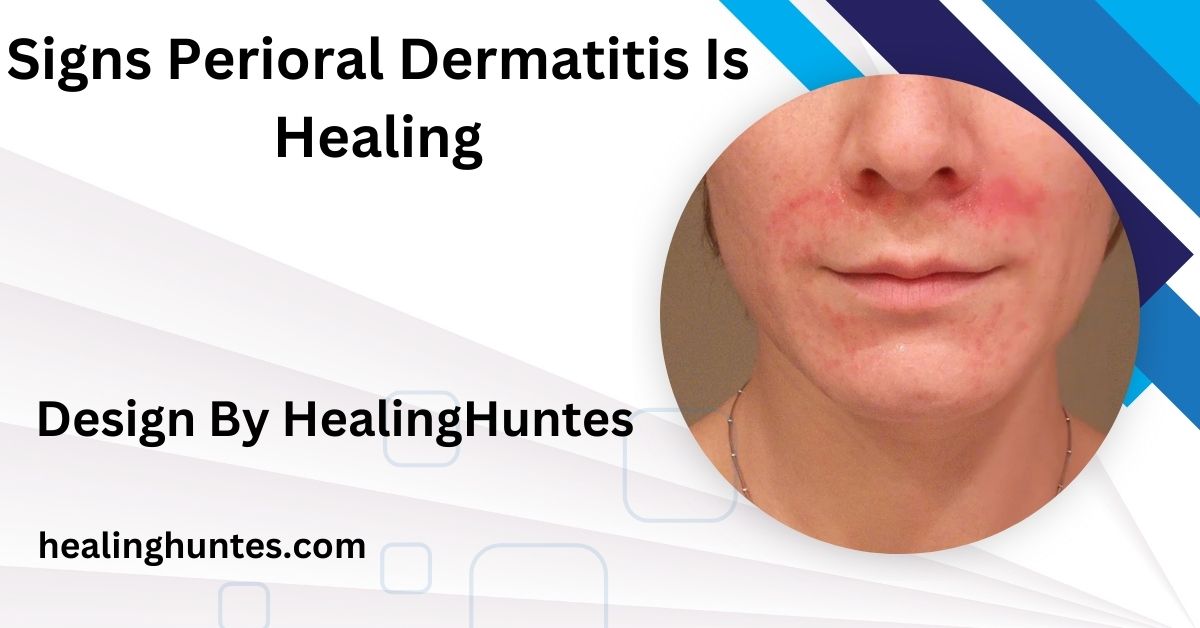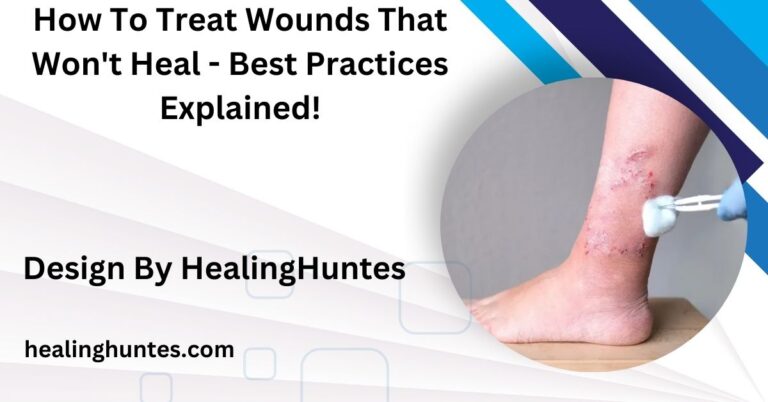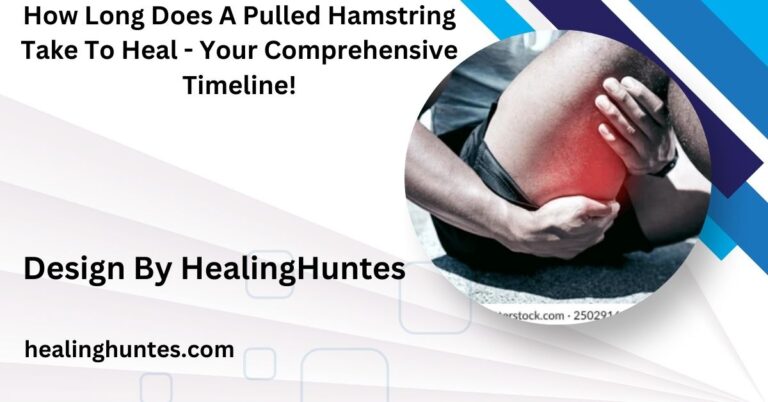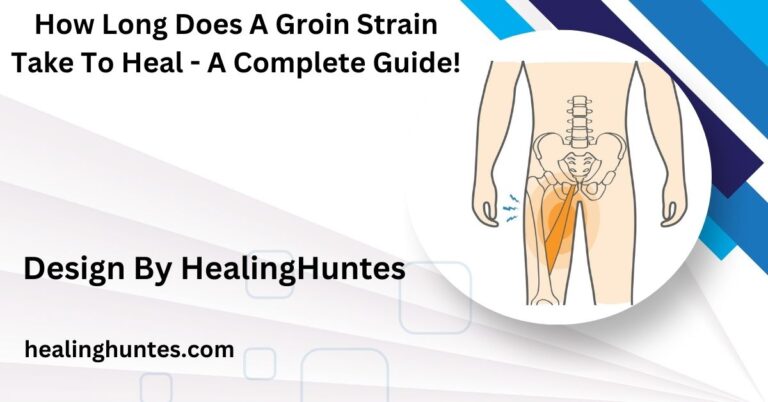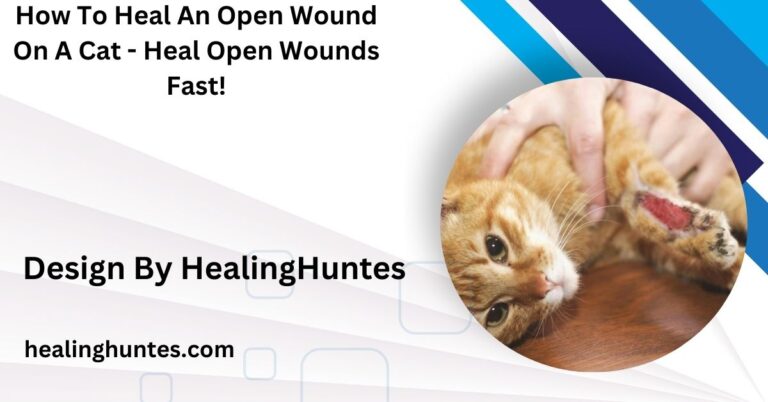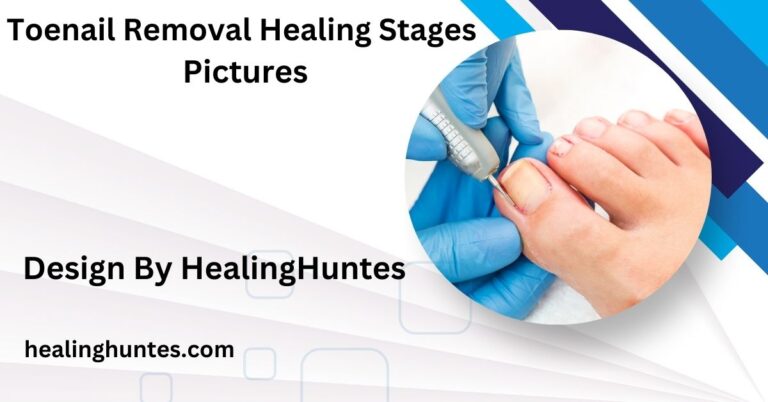Signs Perioral Dermatitis Is Healing – Identifying Healing Symptoms!
Healing from perioral dermatitis is marked by less redness, fewer bumps, and improved skin texture. Recovery varies, so patience is key.
Understanding the healing process and factors involved is crucial for ensuring a successful recovery.
Signs That Perioral Dermatitis Is Healing:
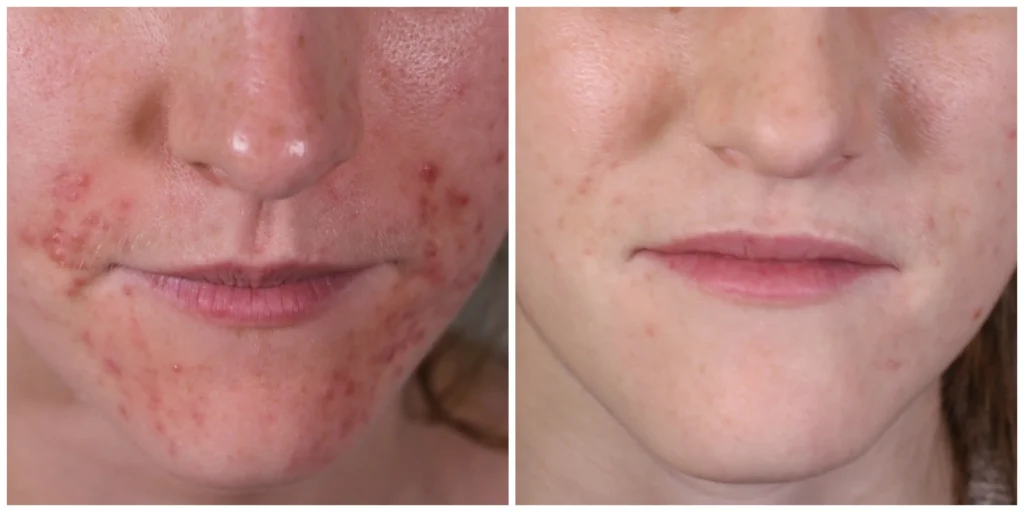
Healing from perioral dermatitis can be challenging and may take time, but recognizing the signs of improvement can be very motivating. Key indicators of recovery include a noticeable reduction in redness and inflammation, fewer and smaller papules, and less tenderness and discomfort in the affected areas.
Improved skin texture and a decrease in itching and irritation also signal healing progress. Being aware of these signs can help you stay positive and committed to your skincare routine as your skin improves.
Reduction in Redness and Inflammation:
One of the most apparent signs of healing is a noticeable decrease in redness and inflammation in the affected areas. Initially, the skin may appear very red, inflamed, and irritated. As healing occurs, this redness will begin to fade, and the inflamed areas will look calmer and more normalized.
It’s important to track these changes, as they are a clear indication that your skin’s inflammatory response is subsiding and that your treatment is effective. Documenting your progress through photographs can help you visually confirm these changes over time.
Decreased Size and Number of Papules:
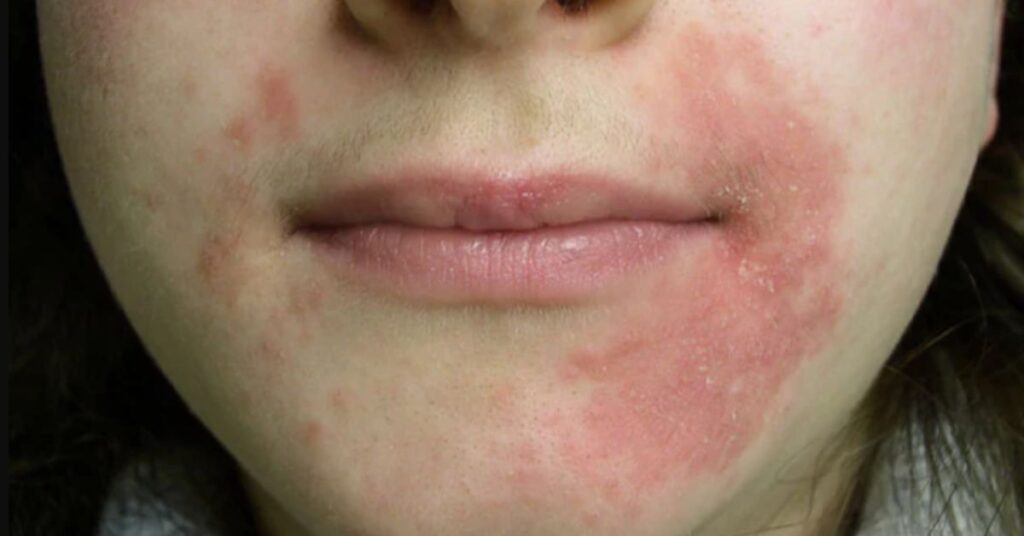
Perioral dermatitis is characterized by clusters of small, red bumps, or papules, that often appear around the mouth, nose, and sometimes the eyes. As you begin to heal, you should notice a reduction in the size and frequency of these papules. The bumps may start to shrink and eventually disappear.
It’s common to have fewer new breakouts as your skin begins to stabilize. Tracking the number of papules over time can provide you with a clearer picture of your healing journey, reinforcing that improvement is on the horizon.
Less Tenderness and Discomfort:
During the healing process, you may find that the tenderness and discomfort associated with perioral dermatitis diminish significantly. Initially, the affected skin can feel sensitive and painful, especially during cleansing or applying topical treatments. As your skin heals, this sensitivity should decrease, allowing you to cleanse your skin more comfortably.
A reduction in pain is a positive sign that inflammation is subsiding, and your skin barrier is regaining its strength.
Improved Skin Texture:
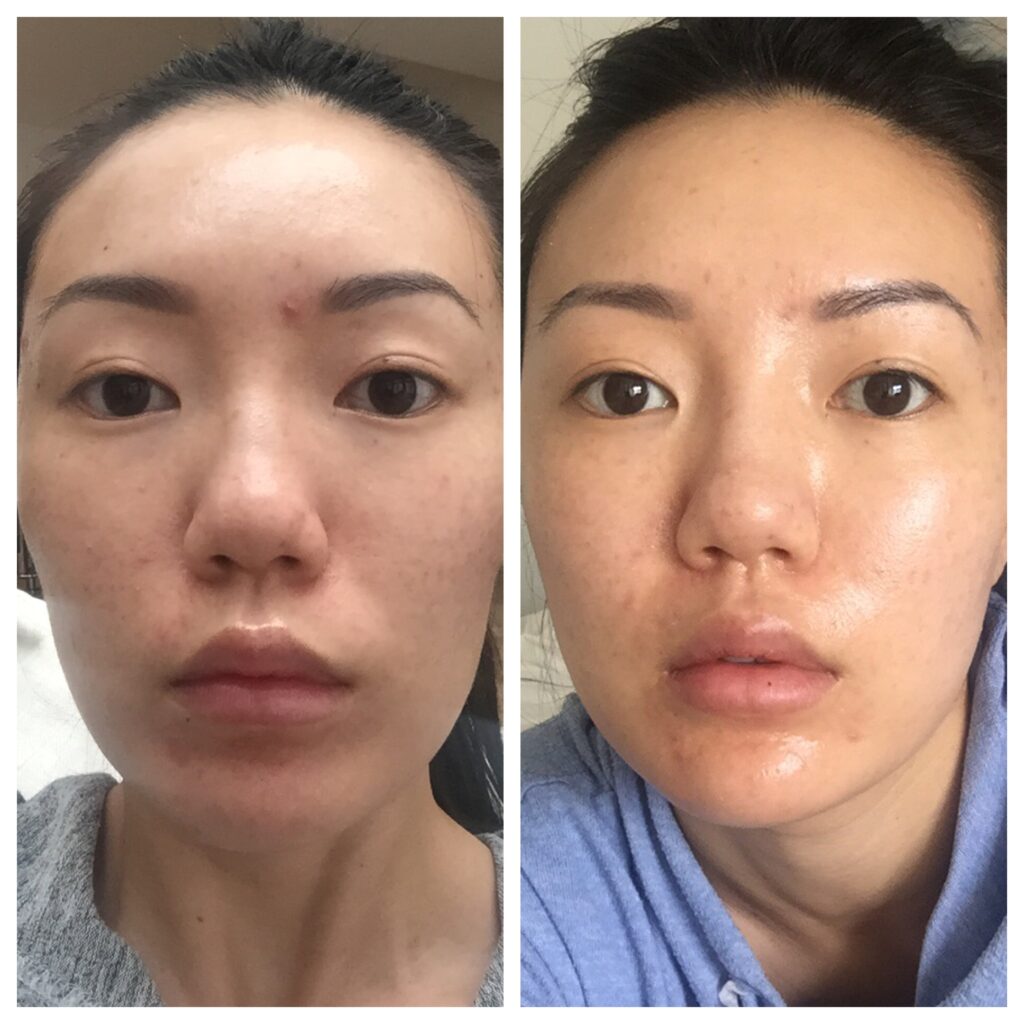
As your skin recovers, you may begin to notice an improvement in its texture. The roughness, flakiness, and unevenness often seen with perioral dermatitis should gradually smooth out. Your skin might feel softer and more supple,
Indicating that the skin barrier is repairing itself and regenerating new skin cells. Enhanced texture also means that your skin is better able to retain moisture, which is crucial for overall skin health.
Less Itching and Irritation:
Itching and irritation are common symptoms associated with perioral dermatitis. If you observe that these sensations are becoming less frequent and intense, it’s a strong sign that your skin is healing. Decreased itchiness indicates that inflammation is reducing, and your skin is becoming less reactive to irritants. Finding relief from these uncomfortable sensations can significantly improve your quality of life and make it easier to adhere to your treatment regimen.
Fewer Triggers and Flare-ups:
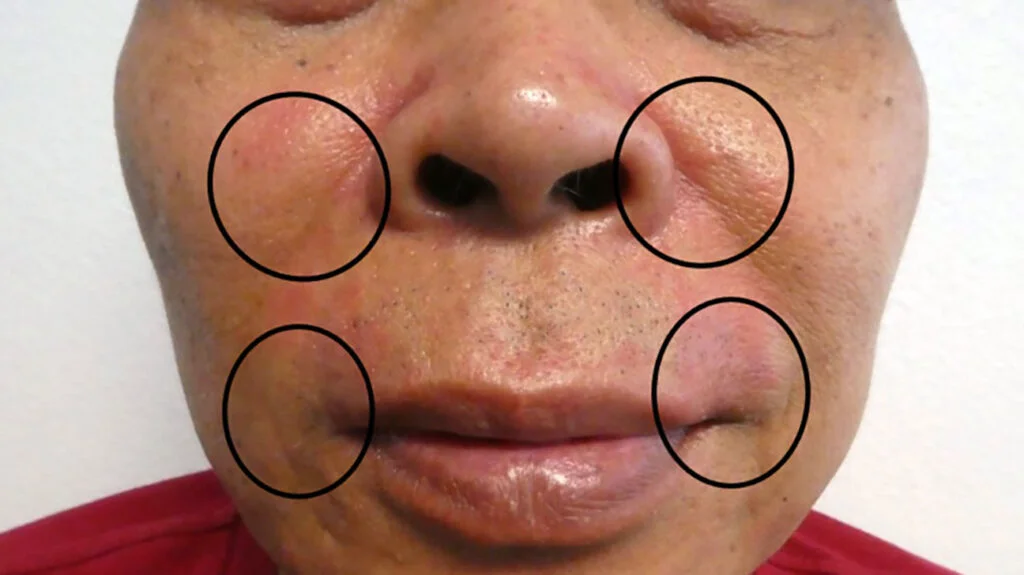
As your skin heals, you may notice a decline in the frequency of flare-ups and an increased ability to identify and avoid triggers. Initially, certain skincare products, environmental factors, or dietary choices may have aggravated your condition. Over time, as your skin becomes more resilient, you may find that it is less sensitive to these triggers.
Keeping a journal of your daily habits, products used, and any flare-ups can help identify patterns, enabling you to tailor your skincare routine more effectively and avoid irritants.
Balanced Oil Production:
Healthy skin relies on a balance of oil and moisture. During the healing process, you may notice that your skin’s oil production stabilizes. Initially, you might experience excessive dryness or oiliness, but as your skin recovers, it should return to a more balanced state. This balance is essential, as overly dry skin can lead to further irritation, while overly oily skin can contribute to breakouts.
Maintaining a consistent skincare routine with appropriate moisturizers can aid in achieving this balance.
Gradual Return to a Normal Complexion:
As the healing process continues, you should observe your skin gradually returning to its natural complexion. Discoloration from previous inflammation may take time to fade, but you should start seeing less contrast between the affected areas and the surrounding skin. This evenness in skin tone is a good sign that your skin is recovering and that inflammation is decreasing.
You might consider using gentle, non-comedogenic makeup products to help even out your complexion while still allowing your skin to breathe.
Enhanced Overall Skin Health:
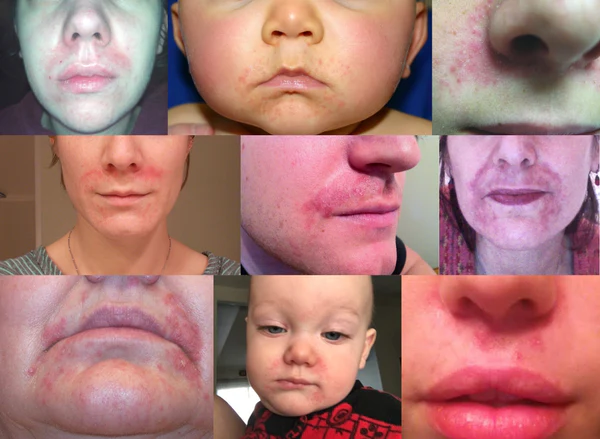
As you take care of your skin and follow appropriate treatment regimens, you may notice improvements in your overall skin health beyond just the perioral dermatitis. This can include fewer blemishes, improved hydration, and a more radiant appearance.
Adopting a comprehensive skincare routine that focuses on hydration, gentle cleansing, and non-irritating ingredients can enhance your skin’s health, making it more resilient to future flare-ups.
Increased Confidence and Well-being:
Finally, one of the most significant indicators of healing is a shift in your mental and emotional well-being. As your physical symptoms improve, you may experience a boost in confidence and a reduction in anxiety related to your skin condition. This psychological aspect is just as crucial as the physical signs of healing; feeling good about your skin can greatly enhance your quality of life.
Engaging in self-care practices, maintaining a positive outlook, and seeking support from friends, family, or a therapist can be beneficial during this time.
FAQ’s
1. What are the main signs that perioral dermatitis is healing?
The primary signs include reduced redness and inflammation, fewer and smaller papules, less tenderness and discomfort, improved skin texture, and decreased itching and irritation.
2. How long does it typically take for perioral dermatitis to heal?
Healing time can vary significantly from person to person, depending on individual factors and treatment adherence. It may take several weeks to months for complete recovery.
3. Should I document my skin changes during the healing process?
Yes, documenting changes through photographs or a journal can help track progress and identify patterns, making it easier to adjust your skincare routine as needed.
4. Can my overall skin health improve while healing from perioral dermatitis?
Absolutely! As you care for your skin and follow a proper treatment regimen, you may notice improvements in overall skin health, including fewer blemishes and better hydration.
5. What should I do if I don’t see improvement in my symptoms?
If you don’t notice any signs of improvement or have concerns about your condition, it’s essential to consult a dermatologist for personalized advice and potential adjustments to your treatment plan.
Conclusion
Recognizing the signs of healing from perioral dermatitis is essential for maintaining motivation and a positive outlook during recovery. It’s crucial to remain patient, as healing can be a gradual process, and results may vary from person to person. If you are unsure about your progress or have any concerns, consulting with a dermatologist can provide personalized advice and support, ensuring that you are on the right path to recovery.
